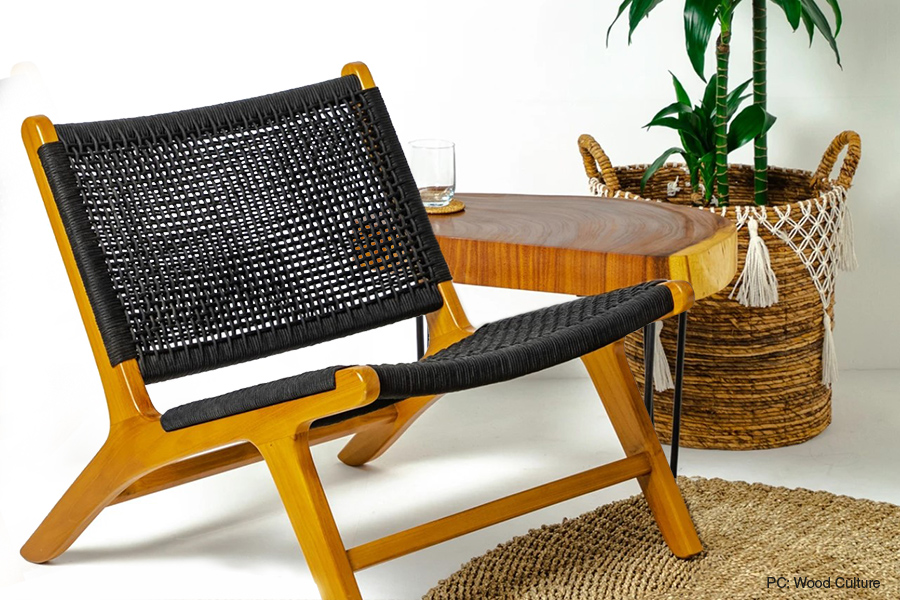
Wood Culture DXB
The UAE furniture retail market has evolved significantly. Digitalisation, personalisation and technology-driven customer experience determine the success of the local furniture market, whose revenues were estimated to reach $446 million in 2020, according to Statista. As COVID-19 pandemic hit the region, this industry was impacted like several others. But there is enough optimism and even indications that the demand for furniture is likely to go up, as the country now prepares to host the world expo in 2021.
“I believe the furniture industry is seeing a revival in demand. Popular brands are starting to communicate a three-four-week delivery timeline due to increased demand. People are moving into new properties, therein driving up demand for furniture. Timely deliver, however, remains a challenge,” states Jacob George, founder of home-grown start-up furniture brand, Wood Culture DXB.
Wood Culture opened its concept store in Al Quoz in October 2019, but even before that the brand was operating from a warehouse in Jebel Ali. An e-commerce site soon followed in May 2020. “Our sales increased 10-fold since the concept store opened in Al Quoz. When we launched our online shop, it accounted for a quarter of our total sales during the first two months. Overall, we have seen a 20% month-on-month growth over the last three months. In August, we are hopeful of a 40% month-on-month increase, compared to July,” George shares.
Wood Culture largely caters to the villa communities in the UAE with its heavy and mostly custom-made furniture pieces. Even amid COVID, according to George, the demand didn’t really decline much. “We have been quite busy throughout this period, even recording big-ticket sales. We have seen a lot of demand for our Rattan furniture. During the lockdown, we have seen a spike in our do-it-yourself (DIY) segment, wherein we delivered raw materials to the consumers’ doorsteps. Chairs have also done quite well. Now, we are experimenting with lights.”
Generally speaking, several furniture brands in the UAE have seen similar demand patterns. Some brands have seen massive growth in the sale of office chairs as people set up workspaces at home. Other brands have seen living room furniture, home décor items and kitchenware sell quite well.
Also read: Post-pandemic retail shifts gears
Trends determining success
Even as the furniture retail market has evolved and is heading towards a gradual recovery, several trends will be key for success. For instance, digitalisation is a big trend within the homeware market. “Brands that didn’t have a digital presence are fast-tracking their digitalisation initiatives. A lot of brands are engaging in drop shipping,” George observes. “In our case, I didn’t expect the online channel to drive up sales by 500%. Rather, I wanted to offer consumers the option to buy via their channel of choice. The results have been quite positive, as we have been able to widen our consumer base by launching a digital presence.”
“Having said that, for a furniture brand like Wood Culture, a brick-and-mortar set-up will always be relevant. We will need both channels to complement each other,” he adds. “In fact, we plan to invest further on the online site, adding more categories, products and DIY items, while enhancing the shopping experience technologically. We will try to make the end-to-end customisation process easier online. We plan to add augmented reality-enabled features to make the shopping experience better. Meanwhile, we will make the concept store experiential with a café and a few more enhancements. Towards end of this year, we will expand to India with a store in Kerala.”
Along with digitalisation, personalisation is another big trend in the furniture retail market. Especially homeware brands at the slightly higher-end are seeing a definite rise in demand for custom-made products. People buying from such brands no longer appreciate a ‘buy what we sell’ approach. This consumption pattern has led to the emergence of brands that offer bespoke furniture with an emphasis on personalisation.
“Almost 70% of our orders are for customised furniture, even as expensive as AED30,000 for a 12-seater table,” George reveals.
While personalisation is appreciated, post-pandemic, customers may not be willing to spend hideously high prices to buy a piece of furniture or home décor. So, the homeware market can become more affordable, while offering customisation is the big question.
“For products to be affordable, overheads like rent and different kinds of fees will have to come down,” he observes. “On a positive note, corrections are happening, as the UAE is a highly business-centric country. As retailers, we are also trying to make personalised furniture pieces more affordable. A decade ago, if a customer demanded a custom-made table, they would have to go to a luxury furniture brand. But now, mid-range furniture concepts are able to offer beautiful yet affordable custom-made units.”
For all the latest retail news from the Middle East, follow us on Twitter and LinkedIn, like us on Facebook and subscribe to our YouTube page.